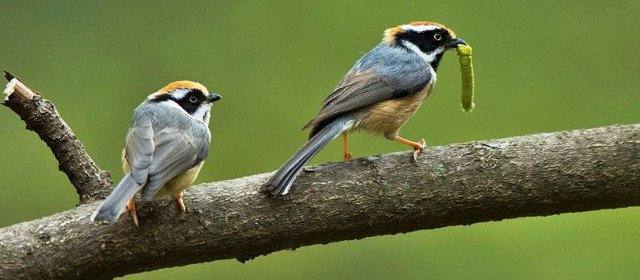
Aegithalos concinnus (Black throated tit)
Aegithalos concinnus, also known as the Black-throated Tit, is a small but striking bird species found within the diverse landscapes of the Great Himalayan National Park (GHNP). With its distinctive black throat, white belly, and light brown wings, the Black-throated Tit stands out amidst the park’s dense forests and shrubs. This tiny passerine bird is often seen in mixed-species foraging flocks, making it a delight to spot for birdwatchers visiting the park.
Although the Black-throated Tit is relatively small in size, its distinct vocalizations and active behavior make it easy to locate in the field. Bird enthusiasts visiting GHNP during the winter months may also catch a glimpse of this beautiful species as it flits through the forest canopy.
Habitat and Distribution in GHNP
The Black-throated Tit is found in subtropical and temperate forests of the Great Himalayan National Park, typically residing between 1,200 and 2,400 meters elevation. It is most commonly seen in areas with abundant scrubland, oak forests, and rhododendron thickets. The species thrives in the dense undergrowth and mixed forests that are characteristic of both the Tirthan and Sainj valleys.
The Black-throated Tit is a resident species in GHNP, though its populations may move to lower elevations in search of food during harsher winter months. It can often be found foraging in the lower branches of trees or on the forest floor in search of insects and seeds.
| Common name | Black-throated Tit |
| Scientific name | Aegithalos concinnus |
| Family | Paridae (Tits) |
| Description | It is a small sized bird with a rufous cap, found all over Shimla, preferring open conifer forests and plantations. It feeds on conifer cones, leaves and Berberis fruit. The Tit prefers to stay in a group of 5-7. It is a common resident bird in Himachal Pradesh and it usually likes to live groups. |
Behavior and Diet
As an insectivorous bird, Aegithalos concinnus feeds primarily on small insects, spiders, and seeds. Its small size and swift movements allow it to navigate through dense foliage and quickly forage for food. It is frequently found in mixed flocks with other small birds, such as the Goldcrest and Nuthatches, which makes it easier for birdwatchers to spot.
The Black-throated Tit’s active foraging behavior and its occasional high-pitched calls make it one of the most interesting birds to observe in GHNP’s rich forest environments.
Conservation Significance
The Black-throated Tit is not considered at immediate risk and is listed as a species of Least Concern by the International Union for Conservation of Nature (IUCN). However, like many forest-dwelling species, its survival is closely tied to the health of the forest ecosystem. The Great Himalayan National Park’s conservation efforts ensure that the natural habitats of this small bird remain intact and protected.



